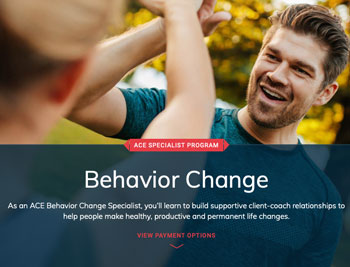
I recently took part in a FaceTime call with about a dozen friends and family members (names have been omitted, mostly for my protection!). We talked a lot about how our lives have changed in 2020, for better and for worse. More time with kids unexpectedly home from college. The stresses of homeschooling younger kids. Enjoying working from home. The financial strain of being furloughed. And the emotional turmoil of managing the unknown.
And then someone mentioned how tough it had been to stay active after her gym closed. “I’ve gained more than 20 pounds since March,” she said [this conversation took place in July], “and I just don’t care anymore.”
Two more voices quickly chimed in, “Me too!”
I found out that all three of them had been doing well in early 2020, embracing some dietary changes and working out together at a gym a couple of days a week. After the shutdown, they met at a park for long walks, but the longer drive and leaving kids at home (or trying to wrangle them in the park) soon made this too difficult to maintain. Then they started walking in their neighborhood but got bored of that pretty quickly. Since then, they’ve performed almost no physical activity. Meanwhile, ordering takeout and eating junk food have become cherished coping mechanisms and much-needed breaks from the monotony.
And they are certainly not alone. Countless people have likely relapsed to unhealthy coping mechanisms, or maybe even adopted some new ones as this pandemic barraged us all with unique and constant stressors. In fact, one study found that roughly 22% of adults reported having gained weight during the COVID-19 pandemic. The researchers found that lack of sleep, decreased physical activity, snacking after dinner, eating in response to stress, and eating because of the appearance and smell of food were behaviors linked to weight gain during self-quarantine. It is worth noting that this study was published in May, just a few months into the pandemic.
So, what can health coaches and exercise professionals do to empower clients who have lost sight of their goals over the course of this pandemic and need some help reestablishing lost habits? Consider sharing the following strategies with clients, and perhaps using some of them yourself.
1. Let go of guilt and shame. “This year has been so trying in so many ways,” says Andi Wardinsky, ACE Certified Health Coach, Personal Trainer and Group Fitness Instructor and a health coach at Noom. “Give yourself and your clients some grace and compassion.” 2020 has been a year like no other, so instead of dwelling on any perceived “failures,” encourage clients to recognize and celebrate the resilience and perseverance they’ve demonstrated in other areas of their lives. Sure, they may be exercising less or ordering takeout a little more often, but they’ve also navigated countless trials and taken on new responsibilities in the past several months that no one could possibly have foreseen.
Empowering clients to free themselves of any guilt is an essential first step to getting back on track.
2. Set new goals. Helping clients set meaningful and realistic goals that align with their values and fit within their current reality is vital. Be mindful of the fact that each client’s situation is unique, and you should collaborate with them to set goals and develop programming accordingly. Clients who were avid gym-goers only several months ago may not be able to, or feel comfortable, entering a fitness facility at the moment. And, their goals may have shifted from fitness- or performance-based objectives to become more focused on spending time with family and attaining the health benefits of being physically active. The last thing you want to do is have clients set unreasonable objectives (or objectives that don’t match their current needs), fall short and then relapse even further.
3. Embrace family fitness. Angel Chelik, ACE Certified Health Coach, Personal Trainer and Group Fitness Instructor, suggests that clients take a step back and rethink their understanding of “exercise” vs. “movement.” Family and household routines have changed dramatically in recent months, so encourage clients to find opportunities to incorporate movement into their routines. Chelik suggests clients take family walks during the natural breaks that occur throughout the day—whether that is the lunch hour as adults work from home or a break between virtual classes for children who are distance learning.
“Be active during those breaks and the benefits will accumulate,” urges Chelik, who is a fitness consultant and adjunct professor at Southwestern College in San Diego, Calif. Chelik goes on to suggest that parents cheer on their kids during movement breaks or, better yet, participate! Remind your clients that the difference between joining their kids in a quick game of basketball at the park versus sitting on a bench and scrolling on their phone as they watch from a distance is tremendous. Not only will they reap the benefits of getting the blood pumping, but role modeling physical activity will also demonstrate to their kids that they value that time together.
4. Fight the impulse to “get back to normal.” Just because a routine worked before the pandemic does not mean it’s the only or best way to be active. Encourage clients to use this time to pivot and try something new. Perhaps they’ve discovered a love of outdoor exercise as they’ve transitioned from gym-based treadmill or elliptical workouts to the hiking trails. Maybe they’ve found a social-support circle online and are enjoying virtual group fitness classes and online fitness challenges. As Chelik points out, “This may be the ideal time to seek out something they’ve never tried before or to rediscover an activity they used to enjoy.”
Some clients may actually benefit from saying goodbye to old habits—even good ones—and taking a novel approach to physical activity and wellness, as variety can be a key element of long-term exercise adherence.
5. Try “temptation bundling” and “habit stacking.” Wardinsky describes temptation bundling as coupling things you should do with things you want to do. It’s a technique many people use without thinking about it—personally, I’ve never been in better shape than when I watched all seven seasons of Sons of Anarchy while on the treadmill—but consciously implementing the strategy can be helpful. Clients can think of creative ways to match “shoulds” with “wants” throughout their day.
Wardinsky also recommends habit stacking as another means of encouraging clients to find creative ways to alter their routines by inserting a “should” between a “have to” and a “want to.” For example, after dinner, a client may have to do the dishes and want to relax and read a book. Between those two events, clients can insert something they should do, like go for a walk, do some mindful breathing or perform a quick body-weight training routine. Using a “should” to build a bridge between the things we have to do and those we want to do can create important and beneficial habits.
6. Don’t forget about nutrition. When it comes to preparing and consuming healthy snacks and meals, Chelik suggests stocking your household with nutritious food—as much as is reasonably possible. When people are bored or feeling house-bound, one of the most convenient coping mechanisms is to grab an easy—and usually unhealthy—snack. To counter this impulse, encourage your clients to buy only what they need, says Chelik, “including fresh foods and healthy snacks like fruits and vegetables.” Filling the house with chips, cookies or other unhealthy treats makes it that much harder to make healthy choices, and counting on willpower is problematic when trying to make a lifestyle change, especially for those who are also coping with additional stressors—which we all are.
Chelik offers another strategy for her clients who are parents: Take advantage of the additional at-home time to teach your kids how to shop for, and then cook, healthy meals. This is a habit that benefits everyone involved and teaches kids an important skill that can last a lifetime. Remember, kids have little to no control over the foods they eat or the routines that make up their daily lives, so it’s up to parents to teach and model healthy behaviors.

Liz is a stay-at-home mother of two who was a long-time personal-training client of yours before the pandemic. Her exercise routine had included full-body muscular training work with you for two sessions each week and performing three cardio sessions each week on her own at the gym while her kids were at school. Though your gym is now open with limited capacity, Liz has been unable to restart her routine because she is busy all day overseeing her kids’ virtual distance-learning classes. She is highly motivated to “get back to normal,” but is struggling to find the time to be active given her new, much more hectic, daily schedule.

The following is an example of how the principles of the ACE Mover MethodTM can be applied using the ACE ABC Approach™ to help Liz establish new goals and a workout routine that fits within her new schedule.
Ask: Asking powerful open-ended questions to identify the client’s goals will spark a discussion about expectations and whether goals should be modified to better align with a current situation.
Personal Trainer: You mentioned that you wanted to “get back to normal.” What exactly does that mean to you?
Client: I just really miss getting my workouts in. I had established a solid routine and felt really good about sticking with it for so long before this pandemic changed everything. I guess “getting back to normal” would mean finding a way to get to the gym five days each week like I was doing before.
Break down barriers: At this point in the conversation, more open-ended questions can be used to discover potential obstacles that may get in the way of working toward a particular goal.
Personal Trainer: Getting back to normal is important to you, and I can certainly understand why! What has changed in your life that is holding you back from returning to your old workout schedule?
Client: Well, I used to work out every morning after I dropped my boys off at school. I’d wear my gym clothes for the drive so I could go straight to the gym and either meet with you or hop on the elliptical for my cardio. Now, with my kids home all day and my husband returning to the office, I feel like I have no time for myself. There’s simply no way I could make it to the gym every day.
Personal Trainer: So many of my clients are expressing the same thing—that their routines have been disrupted and they’re struggling to reestablish their old habits. If you don’t have the ability or time to come to the gym every day, what do you have time for right now?
Client: I’ve thought about coming to the gym in the evenings after my husband is home from work, but that would be tough to do five days a week. Making it to the gym on two days per week seems more realistic and like something my family and I could all work together on to make possible.
Personal Trainer: Coming to the gym on two days per week seems realistic for you right now. Do you think you could make it to the gym two evenings a week for our sessions together?
Client: Yes, I can do that.
Personal Trainer: That’s great! We can continue working on muscular training together—and if it is O.K. with you—we can incorporate a training method called circuit training that will allow us to develop both muscular and cardiorespiratory fitness within the same workout. Do you have any thoughts about other ways you can add cardio to your daily routine?
Client: I like the idea of trying circuit training! The only two options I can think of for adding cardio to my daily routine would be early-morning jogs around the neighborhood or finding ways to be active during the day with my kids. I like the second solution better, as I can’t really imagine waking up an hour earlier than I already do. I always take the kids to the park in the middle of the day when they have a break between virtual classes, so I could try playing games with them rather than resting on a bench and watching. Does that really count as being active, though?
Personal Trainer: Yes, any physical activity helps! I understand your desire to get back to what you were doing before, but those 45-minute elliptical workouts may not be possible for the foreseeable future. Getting creative and finding ways to be active is a great solution. Any other ideas?
Client: I could take a long walk with my sons after school on the days I’m not coming to the gym in the evening. We could probably walk a few miles in our neighborhood. I bet the kids would appreciate getting up and moving after being at their desks all day!
Collaborate: Working together with the client on goals and solutions is the next step. Now that the client has identified potential barriers and suggested some options for moving forward, it’s time to collaborate on mapping out a specific plan.
Personal Trainer: Now that we’ve found some potential solutions that work within your current schedule, let’s get down to specifics and map out your new routine. Your new plan consists of two evening sessions with me at the gym, daily visits to the park during the day and afternoon walks around the neighborhood. Which days work best for your personal-training sessions?
Client: Let’s do Tuesday and Thursday nights around 7 p.m.—assuming you’re available. I will take the kids to the park for 45 minutes each day for “recess” between virtual classes, weather permitting, and I will participate in the games they are playing instead of sitting and watching. And I’ll go for afternoon walks on Monday, Wednesday and Friday. I’m also going to find ways to be more active on the weekends with the whole family.
This interaction illustrates how health coaches and exercise professionals can help clients deal with their desire to “get back to normal” and find creative ways to reach their goals while accepting their new realities. Ultimately, Liz identified her own obstacles and then found solutions to overcome them.
Expand Your Knowledge

ACE Specialist Program: Behavior Change
The ACE Behavior Change Specialist Program teaches you the key tools to promoting behavior change and creating a foundation for a healthy lifestyle. You will learn how to help clients of all backgrounds recognize counterproductive behaviors and coach them to discover new methods to move more, eat better and make healthier decisions for themselves and their families.

ACE Mover Method: Empowering Clients Through Behavior Change
In this live webinar, Sabrena Jo, ACE Director of Science and Research, and Dennis Sanchez, ACE Health Coach Education and Training Lead, explain how to use the ACE Mover Method and the ACE ABC Approach to better serve your health and fitness clients. Regardless of their stage of change, you will be able to support and guide clients along their behavior-change journey with an actionable, step-by-step process. You will use strategies that will not only help your clients be more successful but will also elevate you as a professional and improve your business.

Creating a Motivational Climate for Behavior Change
In this course from ACE Director of Science and Research Sabrena Jo, MS, learn specific strategies for creating the best motivational environment for clients to be successful and achieve their behavior change goals. Using the ACE Mover Method and ACE ABC Approach, you will be equipped to immediately foster a positive motivational climate in your fitness business to help get and keep clients moving.





 by
by 







